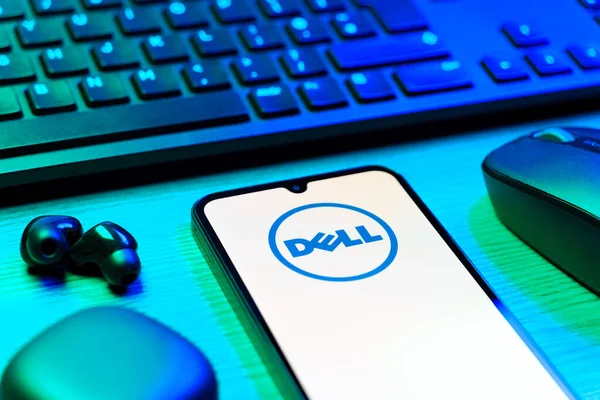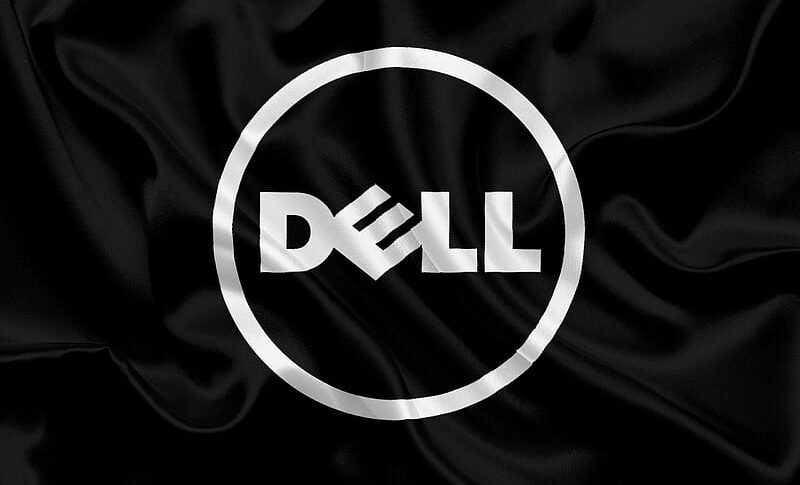
Greetings, marketing students! Today we’re examining Dell Technologies – the company that proved you could build a tech empire by simply asking “What if we just… sold computers directly to people?” Revolutionary? Perhaps. Obvious in hindsight? Absolutely. Perfect for your case study? You bet.
Dell Technologies is a global tech giant that kicked off its journey back in 1984 when Michael Dell had the brilliant idea to start a PC business right from his dorm room (a little tip for all you aspiring entrepreneurs out there: you don’t need a swanky office to get started). Fast forward to today, and Dell is all about manufacturing computers, servers, storage devices, network switches, and pretty much everything else that keeps your IT department feeling like rock stars. They’re also behind brands like Alienware (for gamers who need RGB lighting on everything) and VMware (recently spun off, because corporate structure is complicated).
Dell’s marketing approach is fascinatingly straightforward, which is precisely what makes it brilliant case study material for anyone seeking guidance at Study Creek or diving deep at Dissertation Hive.
The Direct Model Revolution: In the 1980s, while competitors were playing middleman games with retailers, Dell said “hard pass” and sold directly to consumers. They cut out intermediaries, reduced costs, and let customers customize their machines. It was disruption before “disruption” became every startup’s favorite buzzword.
B2B Mastery: While consumer PC sales became a race to the bottom, Dell pivoted hard into enterprise solutions. They now market heavily to businesses, positioning themselves as the reliable, boring-in-a-good-way choice for corporate IT infrastructure. Their tagline might as well be “We won’t make your CTO nervous.”
Segmentation Genius: Dell segments like it’s an Olympic sport. Home users get Inspiron. Professionals get Latitude. Gamers get Alienware with enough LED lights to guide aircraft. Every brand knows that targeting specific demographics is key, showing us that a one-size-fits-all approach just doesn’t cut it.
Content Marketing and Thought Leadership: Dell churns out white papers, webinars, and case studies at lightning speed – faster than you can say “digital transformation.” They’ve really nailed the role of tech consultants, going beyond just being hardware vendors. It’s a smart move in B2B marketing – focus on selling the solution rather than just the product.
Sustainability Storytelling: Dell has skillfully integrated environmental responsibility into their brand story, showcasing their use of recycled materials and ambitious carbon neutrality targets. After all, what screams “cutting-edge tech company” more than the idea that we can tackle climate change just by improving our packaging?
Dell’s website isn’t just a store; it’s a customization playground where you can spend three hours configuring a laptop you’ll probably regret in two years when specs improve. Their e-commerce platform pioneered the “build-your-own” model that everyone now copies, complete with upsells that make you question if 32GB of RAM is really necessary (it is, apparently).
Dell exemplifies direct marketing, market segmentation, B2B strategies, and supply chain innovation—basically every marketing concept your professor loves. They transformed an industry by eliminating unnecessary steps, which is ironic considering how many steps it takes to check out on their website.
The lesson? Sometimes the best innovation is just common sense executed exceptionally well. Revolutionary, right?

Write a summary of Dell’s distribution strategy over the years.
Answer the following questions:
· Is dell using intensive, selective, or exclusive distribution for its market coverage? Why is this appropriate for Dell’s products and target markets?
· How does Dell’s preference for direct channels affect its decisions about physical distribution?
· What issues in channel conflict might arise from Dell’s current distribution arrangement?
In your opinion, write recommendations to improve Dell’s distribution strategy worldwide.
[Name]
Instructor: [Your Instructor’s Name]
[Course]
[Date]
Title: Dell’s Distribution Strategy: Balancing Direct Channels and Global Reach
Dell Technologies has been a trailblazer in changing how distribution works in the computer industry for quite some time. Founded in 1984 by Michael Dell, the company shook things up by changing the way personal computers got into the hands of customers. Instead of going through the usual retailers or distributors, Dell chose a direct-to-consumer approach, letting customers build and order their computers straight from the source. This fresh strategy not only cut down on inventory costs and markups but also gave Dell a tight grip on production and delivery. As the years went by, Dell adapted its strategy to blend both direct and indirect channels, keeping pace with shifting market trends and what customers wanted.
Initially, Dell’s straightforward direct distribution strategy really set it apart from the competition. Customers had the convenience of ordering online or over the phone, and Dell would ship products straight from their assembly plants. This approach, known as build-to-order (BTO), perfectly matched production with actual demand, which helped cut down on excess inventory and boosted cash flow.
However, as global markets evolved and competitors like HP and Lenovo started to establish a stronger retail presence, Dell began to form selective partnerships with retailers and resellers in areas where direct access was limited. Nowadays, Dell has adopted a hybrid model—keeping direct sales for business and government clients while also using selective distribution for consumer markets through authorized retailers, online marketplaces, and Dell-branded stores in key locations.
Dell’s market coverage approach is best described as selective distribution. The company takes a thoughtful approach in selecting its intermediaries and channels, prioritizing quality of service and customer experience over simply reaching a mass market. This strategy aligns perfectly with Dell’s products and target audience, as their technology solutions often need customization, technical support, and after-sales service—elements that are best handled by knowledgeable and controlled partners. Going for intensive distribution, which seeks to maximize availability, could dilute Dell’s brand and complicate logistics, while exclusive distribution might restrict access in high-demand areas. Selective distribution, on the other hand, finds that sweet spot between broad reach and effective control.
Dell’s strong preference for direct channels plays a big role in shaping its physical distribution strategies. Since Dell custom-builds systems based on customer orders, its logistics focus on speed, accuracy, and flexibility instead of just storing large quantities. The company’s supply chain works hand-in-hand with component suppliers and logistics partners to ensure production and delivery happen just in time. This approach minimizes the need for warehouses and allows Dell to quickly adapt to shifts in the market. However, relying on direct channels also means they need a solid digital infrastructure, advanced order tracking, and dependable global delivery systems.
While Dell has some solid strengths, its distribution strategy isn’t without its challenges, particularly when it comes to potential channel conflict. As Dell ventured into retail, there were times when tensions flared up between its direct and indirect channels. Retailers sometimes felt like they were being undercut by Dell’s online pricing or special promotions. Additionally, business clients might notice some discrepancies between what’s available on Dell’s website and the deals offered through partners. To keep brand consistency and ensure partner loyalty, it’s crucial to manage price parity and maintain clear communication across all channels.
To boost its global reach, Dell should really focus on integrating its channels, making sure customers have a smooth experience whether they’re shopping online or in-store. By building partnerships in emerging markets – especially through local e-commerce platforms – Dell can make its products more accessible. Plus, tapping into data analytics will help them predict demand better and fine-tune their regional distribution centers. These strategies would not only solidify Dell’s reputation as a flexible, customer-focused tech provider but also maintain the efficiency and responsiveness that have always been part of its identity.
Dell Technologies. Annual Report 2024.
Kotler, Philip, and Kevin Lane Keller. Marketing Management. 16th ed., Pearson, 2022.
Chopra, Sunil. Supply Chain Management: Strategy, Planning, and Operation. 8th ed., Pearson, 2023.
Delivering a high-quality product at a reasonable price is not enough anymore.
That’s why we have developed 5 beneficial guarantees that will make your experience with our service enjoyable, easy, and safe.
You have to be 100% sure of the quality of your product to give a money-back guarantee. This describes us perfectly. Make sure that this guarantee is totally transparent.
Read moreEach paper is composed from scratch, according to your instructions. It is then checked by our plagiarism-detection software. There is no gap where plagiarism could squeeze in.
Read moreThanks to our free revisions, there is no way for you to be unsatisfied. We will work on your paper until you are completely happy with the result.
Read moreYour email is safe, as we store it according to international data protection rules. Your bank details are secure, as we use only reliable payment systems.
Read moreBy sending us your money, you buy the service we provide. Check out our terms and conditions if you prefer business talks to be laid out in official language.
Read more